You’ve probably noticed how SEO has changed. A few years ago, you could target a single keyword, repeat it in an article, and watch rankings increase.
Today, search engines understand context, intent, and relationships between words.
The way users search has also changed. People now search in patterns. They type variations, related phrases, and questions that all orbit the same intent.
Search engines pick up on those connections, and if your content doesn’t reflect them, it’s sidelined.
Semantic keyword clustering solves this issue by showing how search queries naturally group together. Once you see the clusters, you stop thinking in single keywords and start building topic-driven strategies. It’s the difference between chasing rankings and owning a topic.
This article will explain what semantic keyword clustering is, show relevant examples, and walk you through how to create one.
Let’s get into it!
Table of Contents
What is Semantic Keyword Clustering?
Semantic keyword clustering is the process of grouping related keywords by meaning or relationships between concepts, rather than treating each keyword as a standalone target.
For instance, in the cybersecurity SaaS space, terms like “cloud security software,” “cloud security compliance tools,” and “cloud security solutions for enterprises” are semantically related because of their conceptual relationships.
You treat them as one group/one article, rather than creating three competing articles. That way, you cover the entire topic of cloud security software in a single, authoritative piece.
Let’s give you a clearer picture.
Think of writing a book. Your content strategy is the entire book, while the chapters are semantic clusters that explore different angles of the broader subject.
Together, they create a complete body of knowledge that signals expertise to both users and search engines.
Here is an example of a semantic keyword cluster:
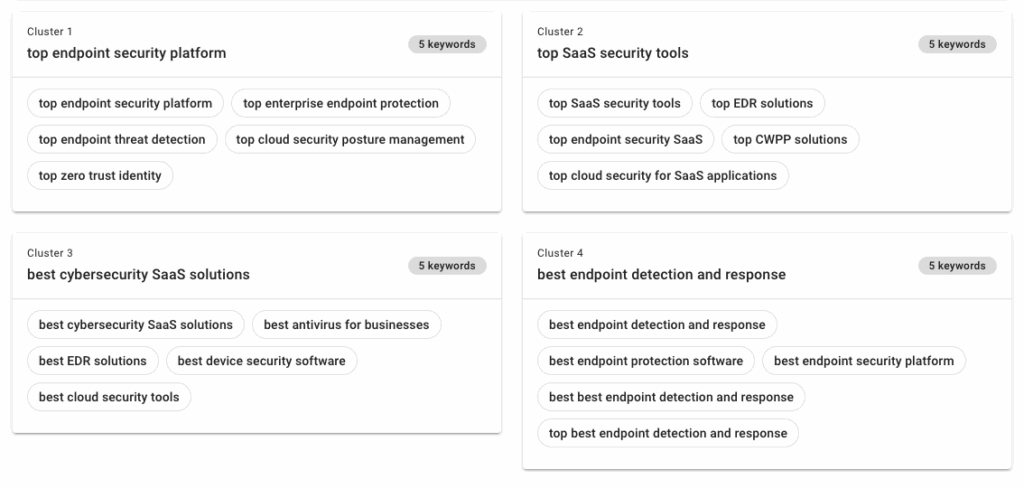
But why do you need one for your site?
Why Semantic Keyword Clustering Matters
After collecting hundreds or thousands of keywords, it can be hard to know what to do next. Semantic keyword clustering helps organize the list into clear groups and helps identify topics to focus on first.
Here are other benefits it brings to the table:
Builds Topical Authority
Semantic clustering ensures your content covers a topic comprehensively, including all related subtopics. This strategy helps your site appear as a go-to resource rather than a collection of disconnected pages.
In return, search engines favour your site because of its depth and breadth on a subject,
Improves Internal Linking Structure
Internal linking becomes natural and strategic when you organize your content around semantic clusters. Pages link to each other in a way that strengthens the topical ecosystem, making it easier for both users and search engines to navigate your website.
Highlights Content Gaps
Semantic clustering makes it easier to identify missing pages/high-potential keywords with no existing page on your site. This insight allows you to fill gaps proactively, creating content that competitors haven’t yet addressed, which can drive more traffic and authority.
So, how do you create your semantic keyword clusters?
How to Do Semantic Keyword Clustering
You need a keyword list before you can create semantic keyword clusters. However, the keyword list should be streamlined under a seed keyword/topic.
Get your keyword list from any of your preferred keyword research tools. Preferably, use your site’s seed keywords as the primary keyword for your research.
To get your keyword list from Google Search Console, go to “Search Results” > “Add filter” > “Query” > “Queries containing” and enter a seed keyword.

Then, click “Export” at the top right corner of the dashboard to download the keywords in different formats. You’ll have a list like this:
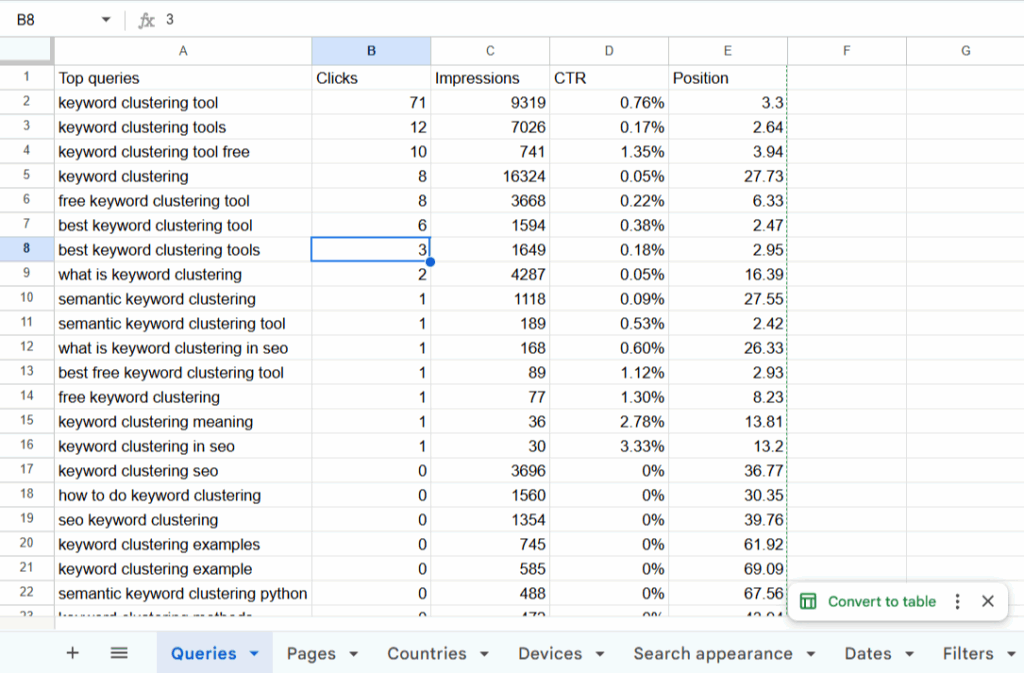
Note: You can repeat this process for other seed keywords to expand your keyword list.
To use Google Keyword Planner, go to: “Google Ads” > “Solutions” > “Keyword Planner” > “Discover new keywords” and enter your keyword. Then, click the export icon at the top right corner to get the list.
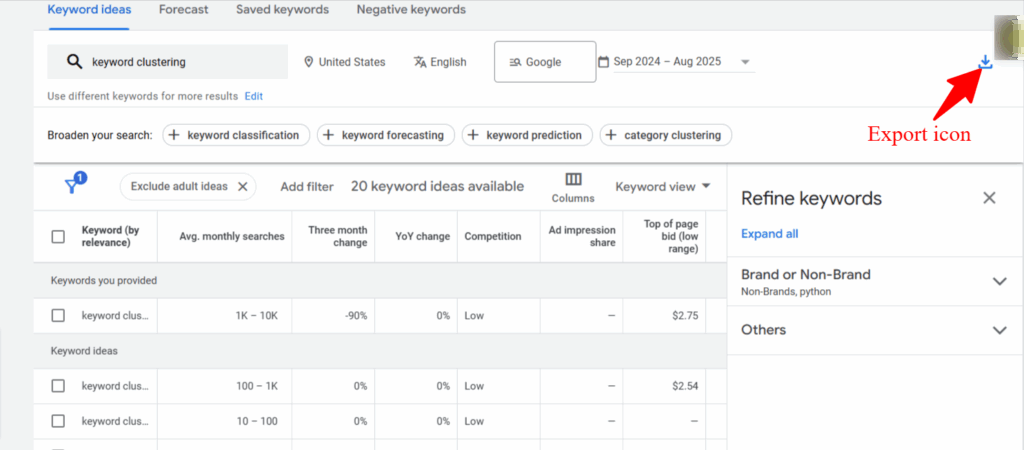
Note: The best semantic keyword clustering works on a list of keywords focused on a specific topic. When you go too broad on your seed topic, you won’t have the best keyword map. Therefore, take the following actions in your keyword list:
- Remove keywords not related to your topic
- Delete duplicate keywords
- Fix typos and spelling variants
At this point, you can proceed with your semantic keyword clustering. You can cluster keywords manually or use AI tools to do the heavy lifting. Let’s see how both methods work:
Manual Method
- Open and analyze your keyword list
- Spot intents: Label each term as informational, commercial, transactional, or navigational.
- Group keywords by meaning: Place near-synonyms and close paraphrases in one cluster. Keep an eye on qualifiers such as “for enterprises,” “for startups,” “pricing,” “how to,” or “vs.”
- Finalize the cluster: Pick a primary keyword for the pillar and add its cluster keywords.
This method looks simple, but takes time at scale. You can still ship a solid plan, but you will spend more hours.
That’s why we use a semantic keyword clustering tool at thruuu.
Semantic Keyword Clustering Tool
Semantic keyword clustering tools speed up clustering and are effective for creating better semantic clusters.
Use thruuu free Semantic Keyword Clustering tool for a fast, no-cost workflow.
This tool analyzes search results and organizes keywords by semantic similarity in seconds.
Go to the thruuu free semantic clustering tool, paste or upload your keywords, and click “Cluster keywords.”
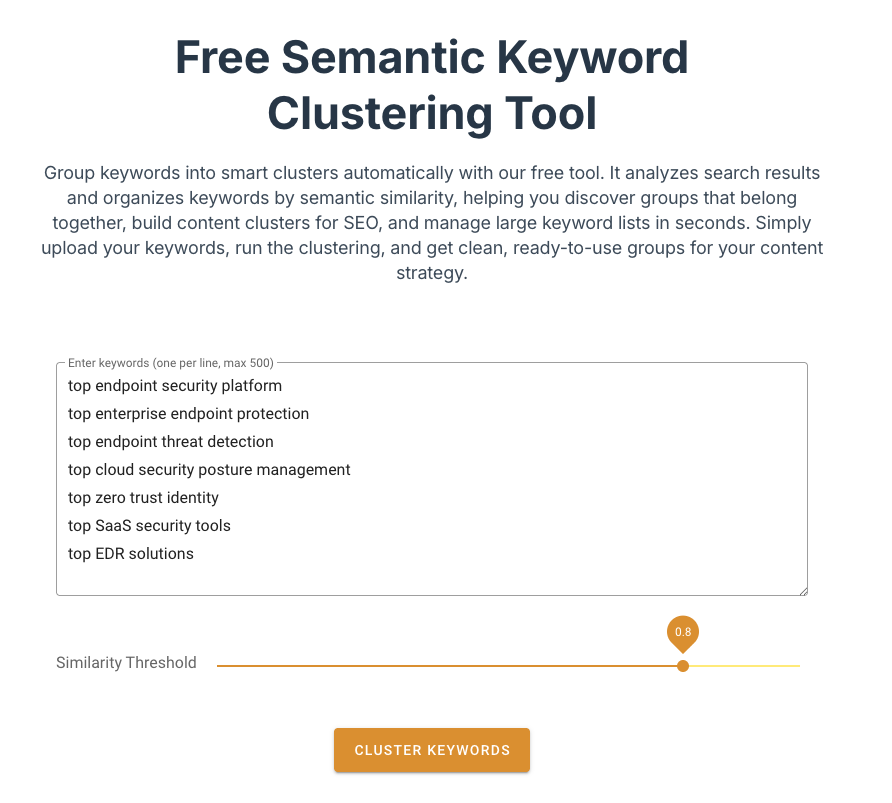
The free tool groups your keywords by semantic similarity, which gives you ready-to-use clusters for planning.
You can even download the result of the semantic clustering as CSV.
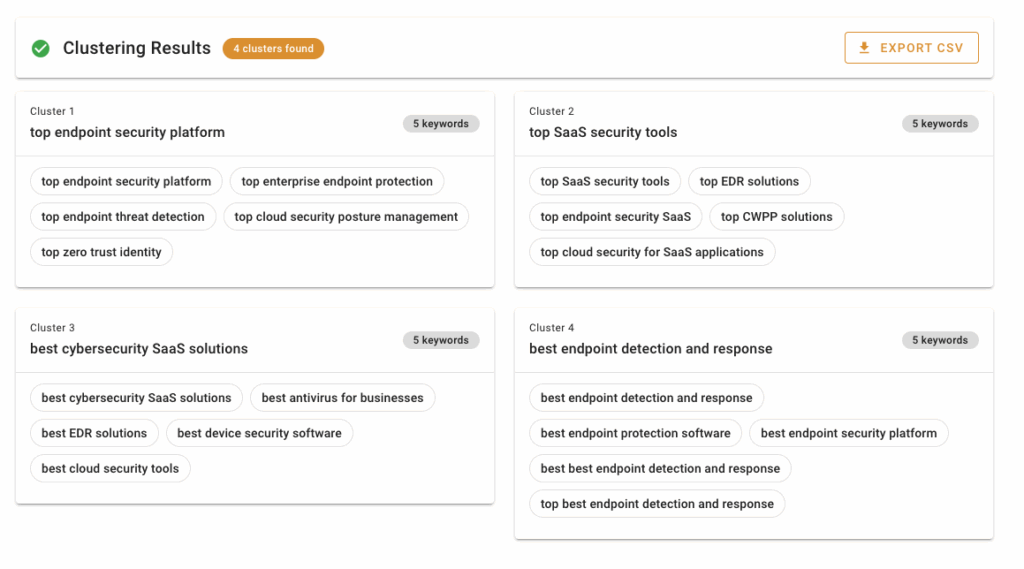
And there you have a ready-made semantic keyword clusters that feature the pillar topic, cluster keywords, and the number of keywords.
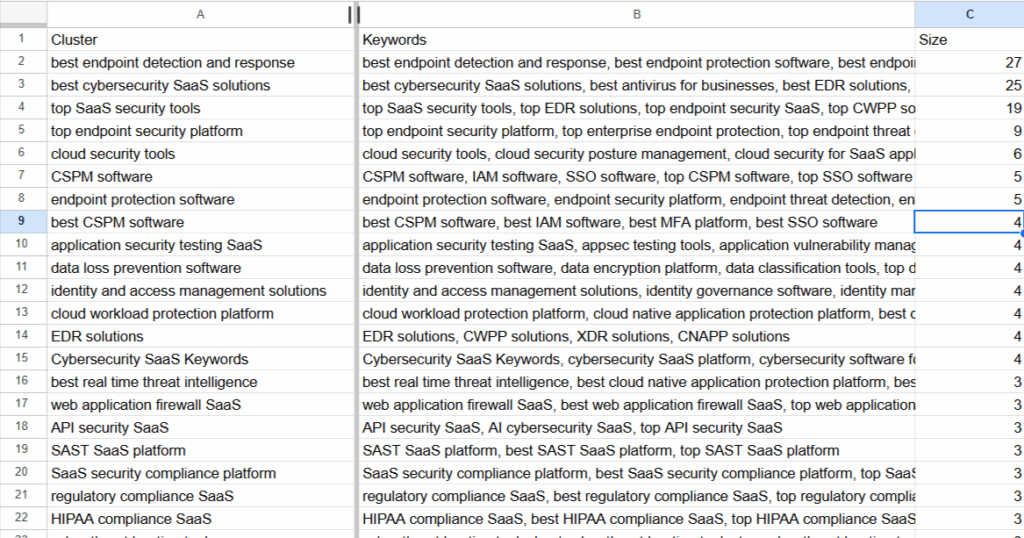
Semantic Clustering Limitation versus SERP-Based Clustering
TL;DR: Semantic clustering is invaluable for planning, but it isn’t bulletproof. Since it relies on meaning rather than SERP results, it can create separate clusters for terms that Google already treats as the same search intent.
This gap is where cannibalization risk comes in—two semantically distinct keywords may require only one page.
SERP-based clustering, on the other hand, solves the issue by showing you how Google actually interprets and displays those keywords in search results.
SERP-based clustering leverages SERP Similarity to compare and group keywords.
Here’s how they stack up:
| Aspect | Semantic Clustering | Serp-based Clustering |
| How it works | Groups keywords based on language meaning, synonyms, and related terms. | Groups keywords by analyzing SERP overlap—if the same pages rank for multiple terms, they belong in one cluster. |
| Focus | Meaning and context of words. | Search intent as Google interprets it. |
| Strengths | Great for building a topical map, understanding themes, and aligning content with natural language. | Extremely effective at preventing cannibalization because it reflects how Google clusters search terms. |
| Limitations | May still split queries that Google treats as the same intent, leading to potential cannibalization if not validated against SERPs. | Can group terms that aren’t semantically close but share intent, which might feel less natural from a content perspective. |
| Best use case | Organizing large keyword lists, planning topic clusters, and mapping authority-building content. | Final check before publishing, ensuring that content aligns with how Google sees intent. |
How to Beat Semantic Clustering Limitation for SEO
Semantic clustering can create a great topical map, but it sometimes splits queries that Google treats as the same intent, leading to potential cannibalization if not validated against SERPs.
That’s why you need a premium keyword clustering tool that groups keywords by search intent as Google interprets them.
That’s the gap the thruuu topic clustering tool fills.
It creates topic clusters based on how Google clusters search queries. Most importantly, you can upload thousands of keywords and have perfect SERP-based clusters in seconds.
It also features filters that help you choose the best clusters.
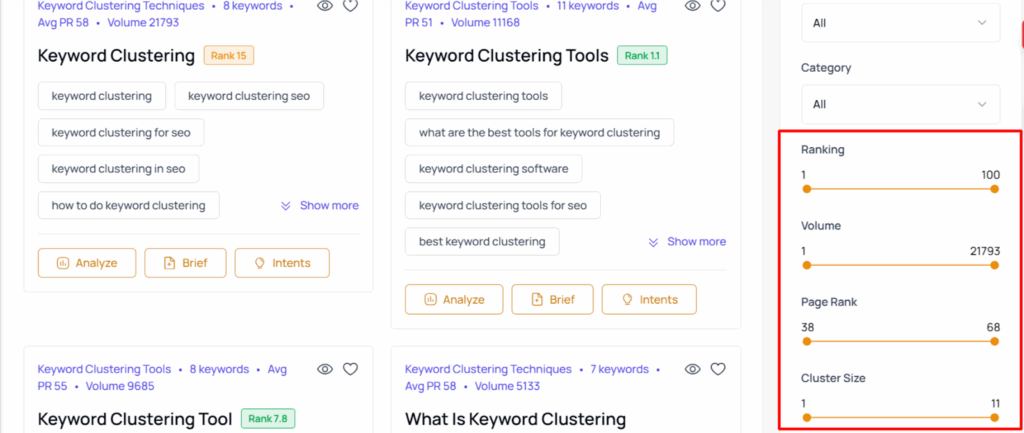
And a detailed cluster analysis that shows the SERP overview, competition insight, People Also Ask questions, content format that works, and more.
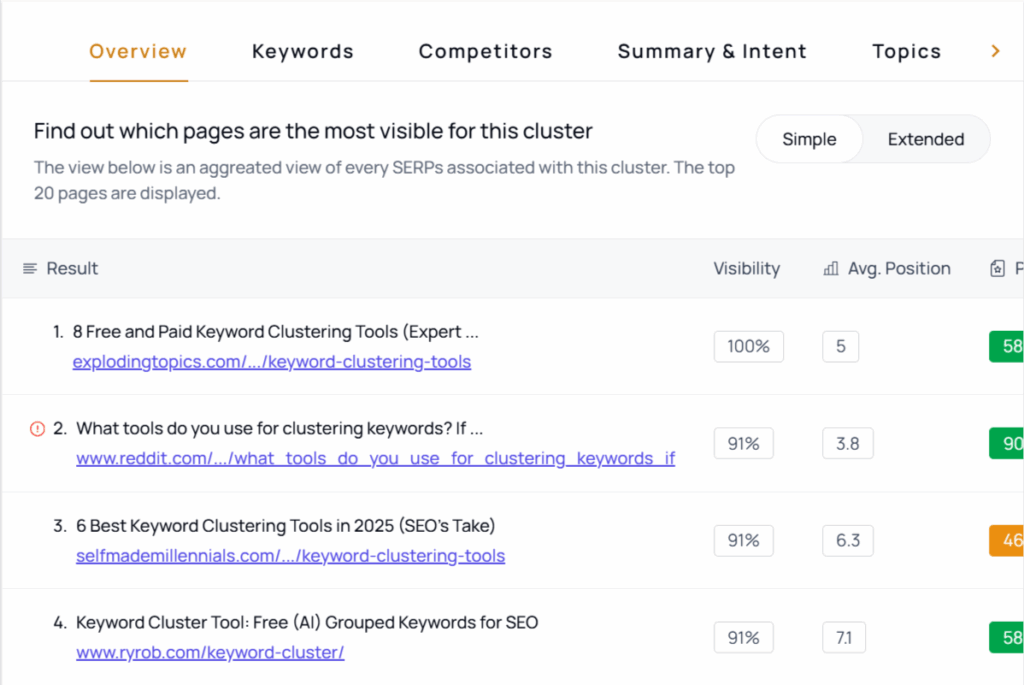
👉 Start your free trial and cluster your first 500 keywords for free.
What to Do With Your Semantic Keyword Clusters
Once you’ve done the hard work of clustering, the real value comes from how you use them. Here’s how to put your clusters to work:
Analyze the SERP
SERP analysis shows what is working on the SERP and idea gaps to outrank your competitors.
Simplify this process with the thruuu SERP analyzer.
This tool uncovers the structure of your competitors’ content and identifies the most popular topics and questions.
Go to the SERP analysis tool, enter your cluster topic, location, language, and search engine, and click “Analyze the SERP.”
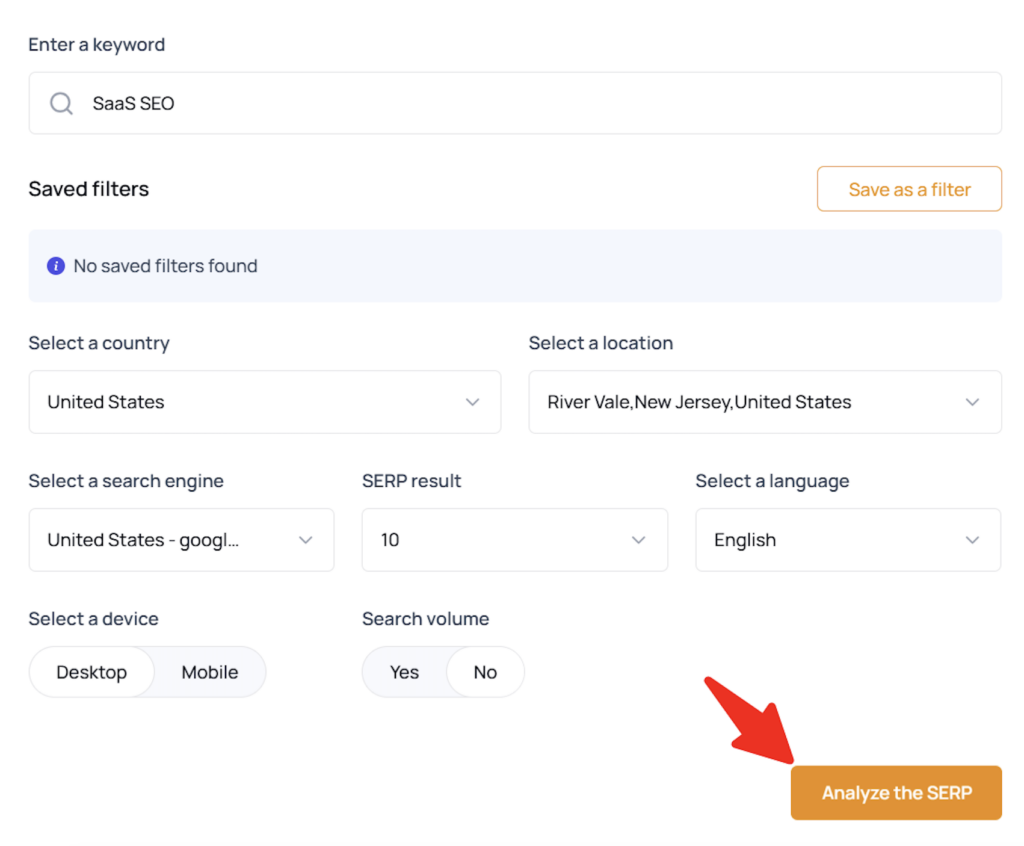
In a few seconds, thruuu provides the SERP overview, AIO analysis & insights (if available), competitors outlines, top questions, average word count, average image count, and more.
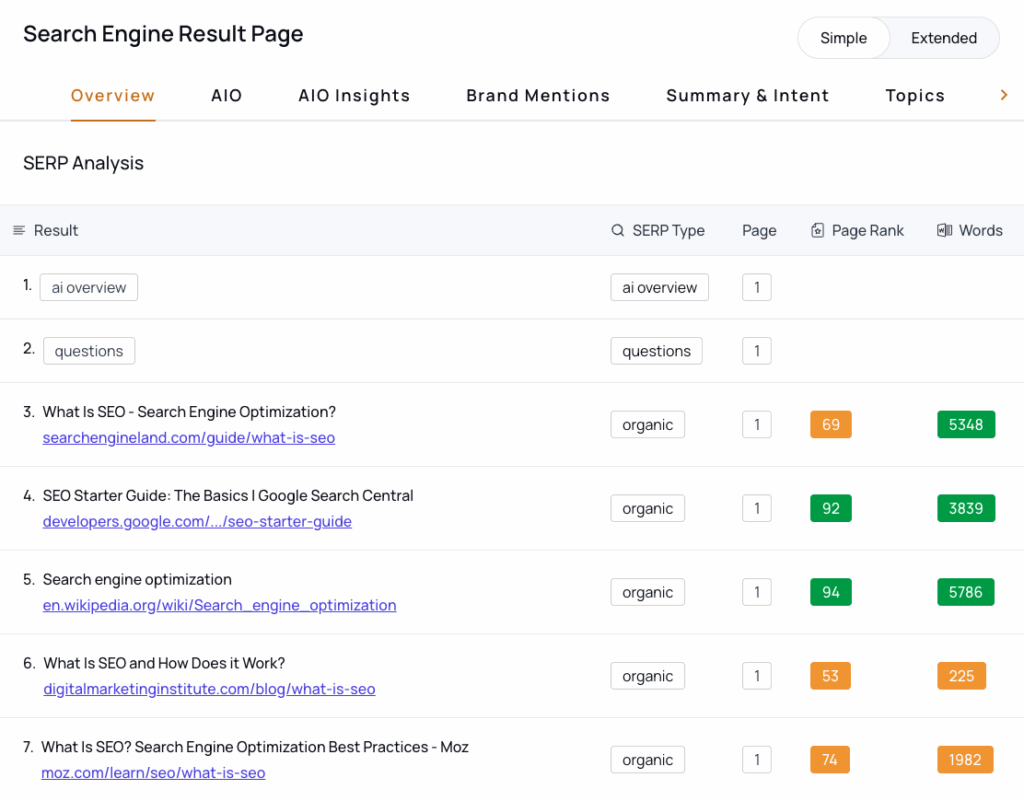
Create New Content
Prioritize “one cluster = one page” instead of “one keyword = one page.”
Each cluster represents a complete search intent, and your task is to create a new piece of content (if you don’t have an existing page) that thoroughly answers it.
This gives you richer, more authoritative pages and avoids wasting resources on thin, overlapping content.
Start with a seo content brief that features a detailed instruction for your writer, SERP insights, article summary, outline, search intent, and more.
thruuu’s content brief generator creates such detailed briefs in minutes by pulling in SERP data. It also features an AI assistant that helps in outline generation.
That way, your writers know which subtopics to cover, what questions to answer, and how to frame the content to match search intent.
Optimize your content with the cluster keywords.
Once the brief is ready, optimize the cluster’s keywords naturally into the content.
Use the main keyword in your title, headings, and metadata, while spreading variations throughout the body. This optimization strategy ensures your article speaks the same language as your audience and signals topical coverage to Google.
Note: You can optimize new cluster keywords in existing pages
Distribute Your Content for Better Reach
Hitting “publish” is just the beginning. Get your content in front of people by repurposing it into formats like LinkedIn posts, YouTube explainers, SlideShare decks, newsletters, or even community forum discussions.
Distribution extends the lifespan of your work and brings in audiences from multiple channels.
Track performance
Finally, measure how your clusters perform. Use Google Search Console to monitor impressions, clicks, and keyword variations your pages rank for.
Pair that with thruuu’s SERP Analyzer to see which competitors are gaining ground and how your content stacks up.
Empower Your Content Team
Our end-to-end content optimization solution empowers your team to crack the Google algorithm, craft exceptional content, and achieve remarkable organic search results.
